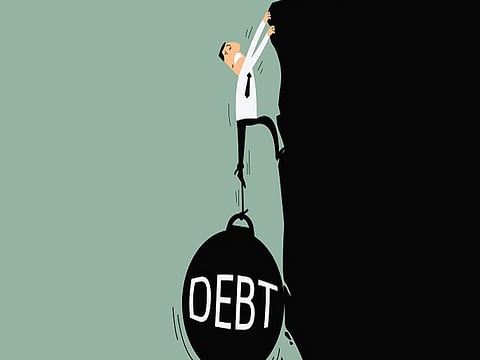Is the world hurtling towards a debt bubble burst?
US remains a habitual offender is taking on more debt to overcome one crisis after other

The global debt avalanche is still rolling on - a report by the Institute of International Finance estimates that government debt rose 12.5 per cent last year to $80 trillion, and accounting for 95 per cent of world GDP (gross domestic product). The total increase in government and private debt grew by 9.3 per cent to an eye-popping $281 trillion compared to $257 trillion for 2019.
This represents 355 per cent of the global GDP. The acceptable rate of public debt to GDP ratio should not exceed 60 per cent, which is a level that makes it relatively easy to deal with what the government owes. Exceeding that level, however, foreshadows that the economy is moving in the wrong direction and sinking further into a mire. And if public debt exceeds 100 per cent, that means a full-blown crisis.
For example, when Greece’s debt ratio reached 140 per cent during the last financial crisis, the economy collapsed, unemployment shot up, citizens lost their savings, and economic stagnation prevailed, which prompted the EU and International Monetary Fund to intervene. The former pumped nearly 400 billion euros into the Greece economy, which, thankfully, managed to recover.
Chronic debtor
The global debt issue is completely different from the national one, especially in the current case simply because a rescue process would not be possible, given that the debt ratio is already at a high and affects the largest economies, including the US, whose sovereign debt has reached $23 trillion and exceeding its GDP.
This means rescuing the global economy by taking on more debt is completely out of the question, as the threat to the global economy from a debt bubble blow out is still a live issue. Let’s take the debt situation of the largest global economy. Two years ago, the US faced an obstacle in financing the federal budget and would have defaulted on debt payments had it not been for US Congress’ approval to raise the public debt ceiling.
And yet, this problem is back again and the US government will be unable to finance its obligations in October, including paying salaries and social benefits and clearing off debt-related payments. That is unless the Congress agrees to again raise the government’s debt ceiling, although it had initially refused to do so earlier this week.
Reality will sink in fast
The US Congress will certainly approve the raising later as there are no other options. Treasury Secretary Janet Yellen said that failing to raise the limit would lead to higher interest rates, a sharp decline in stock prices and financial turmoil. Failing to do so will also impoverish millions of Americans, meaning an imminent collapse not only for the US economy but to the global one as a whole.
The Federal Reserve will add more trillions to the US debt by printing more dollars, but the question here is, how long will this process continue? What we know so far is that there are no magic solutions.
The global economy, especially the US, has become addicted to loans to a frightening degree, which portends either an economic collapse or multilateral “wars” to get out of debt dilemmas and the crisis that will result from it. Fierce and unfair competition is what is prevailing right now. Therefore, the question is not about whether the debt bubble will explode, but rather when will it…
--The writer is a specialist in energy and Gulf economic affairs.
Sign up for the Daily Briefing
Get the latest news and updates straight to your inbox









